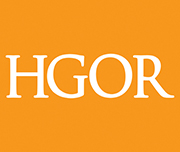Community Engagement in Landscape Architecture and Planning
In Macon, Ga., we had big plans for the historic Rosa Parks Square. However, the surrounding neighborhood had something to say about the redesign. Instead of ignoring the pushback, we opened the dialogue wide open and embarked on a series of meetings that allowed us to learn more about the community and its concerns, while educating residents on our intentions and goals for the public space.
When planners and designers come into neighborhoods with their renderings and ideas, they often receive pushback from the community – oftentimes rightfully so as many neighborhoods have been promised upgrades that have never been delivered. Instead of ignoring the community’s interest, planners should leverage the feedback to two-way communication. The American Planning Association recommends working alongside community members, stating, “by involving as many interests as possible, the product is strengthened by the wealth of the input.”
Community engagement is good for design because it encompasses a wide range of viewpoints and perspectives of people close to the project, bringing up considerations that you may have not been able to know after just a few site visits. Engagement also helps the community feel a part of and accept the proposed project. Many times, projects have been delayed or even stopped because the community was not consulted in the beginning stages of the project.
After completing a series of three meetings with the community in Macon regarding the redesign of the historical and socially sensitive park, I was able to learn a lot about community engagement and now have a new-found respect for the process of ensuring the community feels heard and appreciated.
The engagement process at the first meeting was centered on trying to get input from the community in order to establish a design direction and desired ethos of the park. In other words, “What does the park mean to you and what do you want out of it? What is the big idea?” In this inaugural meeting, we learned we had to be flexible with our meeting agenda. While it turned out to be a very productive meeting, the agenda wasn’t followed to a T. It started out a little rough with tensions running high as residents needed to know their voice was being heard. Flexibility and empathy were two key factors in the success of the following two meetings.
In the second meeting, we presented conceptual drawings and three design options showing what the “Big Idea” could look like. We leveraged the feedback from the first meeting and turned it into three different options that each achieved their goals in different ways. The community placed red and green dots on aspects of each design that they liked or disliked, then voted on a concept. We were then able to move forward with one of the options and begin to develop it further.
At the third and final meeting we presented our comprehensive master plan for the park. We presented several renderings to show what the space would look like once built. We made the “Big Idea” a reality. In the end, we were able to create a richer and more meaningful park design that had the full support of the community thanks to these interactive meetings.
We have engaged communities since Macon, including Vine City in Atlanta. To engage communities, we have used a variety of tactics:
Questionnaires /Surveys
Charrettes /Workshops
Public Meetings
Social Media. For example, at a local Atlanta park, we set up a Pinterest page where neighborhood residents could add photos of what they would like the future park to look like. Then, when we held the first design charrette, we printed out each of the photos on a board. Everyone came up and placed stickers on photos that they liked or disliked.
Like our philosophy states, “HGOR is a company that is focused on designing great places for people, places which support clear returns on investment and provide a stewardship ethic for future generations.” To accomplish each of those facets, we must become allies with the communities we build. We must continue to be flexible, empathetic and good listeners towards the community in order to gather local input and rich dialogue that we can utilize to build great places all over the world.
Blog by Jennifer Teasley, Project Manager
